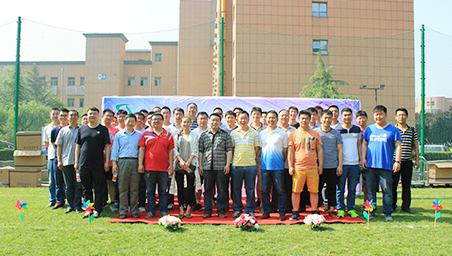
News
Окт . 31, 2024 10:26 Back to list
chelated iron micronutrients
The Importance of Chelated Iron Micronutrients in Agriculture
Iron is a vital nutrient for all living organisms, playing a crucial role in various biochemical processes, including photosynthesis and respiration in plants. However, the availability of iron in soil is often limited due to its tendency to form insoluble compounds, particularly in alkaline and calcareous soils. This limitation can lead to iron deficiency in plants, which manifests as chlorosis, or yellowing of leaves, and can severely impact crop yield and quality. To combat this issue, chelated iron micronutrients have emerged as an effective solution to enhance iron availability and ensure plant health.
Chelated iron refers to iron that is bound to organic molecules, known as chelators. This binding process transforms the iron into a form that plants can easily absorb. Common chelating agents include EDTA (ethylenediaminetetraacetic acid), DTPA (diethylenetriaminepentaacetic acid), and EDDHA (ethylenediamine-N,N'-bis(hydroxyphenylacetic acid)). These chelators stabilize the iron in soil, preventing it from converting into insoluble forms, thus increasing its bioavailability.
In agricultural practices, the application of chelated iron is vital, especially in regions with high pH levels in soil. Farmers often diagnose iron deficiency by observing the symptoms in their crops, particularly in crops such as corn, beans, and leafy greens, which are more susceptible to iron chlorosis. By applying chelated iron micronutrients, farmers can effectively address this deficiency, leading to improved plant health, higher crop yields, and enhanced quality of produce.
chelated iron micronutrients

Additionally, the benefits of using chelated iron extend beyond just addressing deficiency. When plants receive adequate iron, they exhibit improved photosynthetic efficiency, leading to better growth rates and increased biomass. This not only ensures a more robust crop but also contributes to better resilience against environmental stresses such as drought and disease. Healthier plants are less likely to require excessive chemical fertilizers and pesticides, promoting a more sustainable approach to agriculture.
The method of applying chelated iron can vary, including foliar sprays, soil applications, or as part of a nutrient solution in hydroponics. Foliar application allows for rapid uptake by leaves, especially when deficiency symptoms are evident. Soil applications provide long-term benefits as the chelated iron remains in the root zone, gradually releasing nutrients as plants need them.
In summary, chelated iron micronutrients play a crucial role in modern agriculture, particularly in combating iron deficiency and enhancing plant health. Their ability to improve iron availability in soils with challenging pH levels can lead to healthier plants, increased yields, and a more sustainable agricultural practice. As global food production faces numerous challenges, including climate change and soil degradation, the utilization of chelated iron and other micronutrients will be essential in achieving food security and promoting healthy ecosystems. Through continued research and innovative application methods, the agricultural sector can harness the full potential of chelated iron to foster healthier crops and more sustainable farming practices.
-
OEM Aluminum Chelating Agent Supplier – High-Efficiency Chelation Solutions for Aluminum Processing
NewsJul.04,2025
-
High Quality Polyaspartic Acid Potassium Salt Supplier Reliable L Aspartic Acid & Iminodisuccinic Acid Salts
NewsJul.04,2025
-
OEM Potassium Oxalate Chelating Agent Manufacturer & Supplier High Purity & Custom Solutions
NewsJun.24,2025
-
OEM Polymer of Aspartic Acid Supplier L & D Aspartic Acid Customization High-Quality, Eco-Friendly Solutions
NewsJun.10,2025
-
CAS 64723-18-8 High Quality Supplier & Manufacturer Get Instant Quotes Online
NewsJun.10,2025
-
OEM Thermal Polyaspartic Acid - Leading Manufacturer & Supplier for Efficient Heat-Resistant Solutions
NewsJun.10,2025
